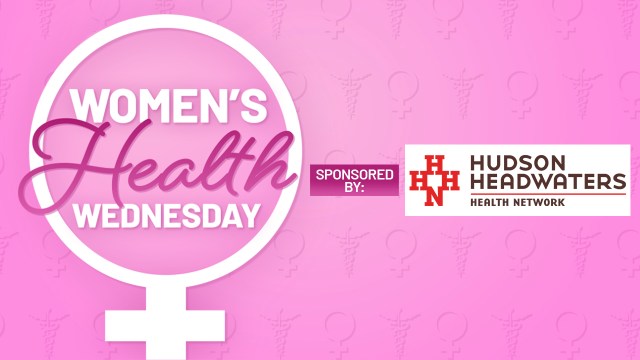We are at a critical crossroads when it comes to women’s health and well-being. Earlier this year, the World Economic Forum recognised the requirement for increased investment in women’s health. While the depth of research in women’s health stagnated during the pandemic, the area is now starting to receive the attention it deserves, with a promising increase in research and initiatives tapping into unmet needs.
Some of the gaps in women’s health include:
Timely diagnosis and support for conditions like Polycystic Ovary Syndrome (PCOS), perimenopause and menopause: Many women affected by these conditions wait several years before receiving a clear diagnosis and experience debilitating symptoms with no answers as to what is going on in their bodies. These women also lack honest and evidence-based supportive resources and often do not know who to turn to.
The management of infertility: The Agency for Healthcare Research and Quality (AHRQ) has published a report showing that the management of infertility remains a topic that is not delved into adequately enough despite 20 per cent of women being infertile.
![]()
Menstrual cycle and reproductive health awareness: Without a balance between the male and the female hormones or a timely menstrual cycle, there is an increased risk of conditions like osteoporosis, certain female tract cancers, immune dysfunction, cardiovascular disease, and metabolic syndrome, amongst other conditions.
The femtech sector has grown tremendously in the last few years, with an industry size between US$500 million to US$1 billion.
There has been much more emphasis on untapped needs, including personalised healthcare, data-driven insights using artificial intelligence (AI), wearable devices, telemedicine, mental health support and inclusivity. The industry is also expanding into new areas of women’s health, such as PCOS, menopause, cancer screening and chronic disease management. The sector is looking at integration into healthcare systems, collaborations and partnerships between specialities and companies, and global expansion into markets where healthcare is limited. The evolution of this sector can potentially target accessibility issues in women’s health and help to address health inequities.
Dr. Aarti Javeri-Mehta, Internal Medicine Specialist & Lifestyle Medicine Physician, said: “Wearables like the Apple Watch have the potential to provide valuable information to patients and healthcare professionals. Advanced tracking of health and wellness parameters like menstruation, cyclical changes, symptoms (bloating, cramping, nausea), cervical mucous changes, temperature changes, heart rate variability and sleep quality can now be done easily and accessibly. From a clinical perspective, this automatically provides vast data that can be objectively analysed and interpreted to aid in the diagnosis, further medical management, and improve patient self-management.”
How are menstrual cycles connected to overall health?
The topic of menstruation is still one that is surrounded by stigma and taboos, particularly when women experience difficulties with their cycles. What is often overlooked is that the significance of menstrual cycles and menstruation extends far beyond just the bleed. It is required for:
- Bone health: Oestrogen plays a vital role in the growth and maturation of bone and its turnover by controlling the balance between bone-making cells and bone-breaking cells.
- Cardiovascular health: Oestrogen plays a protective role in heart health through a variety of mechanisms. These include an increase in HDL (good cholesterol) and a decrease in LDL (bad cholesterol), which is beneficial for cardiovascular health. It also helps dilate and smooth blood vessels to allow for better blood flow.
- Immune function: Oestrogen and its receptors have also been shown to regulate and modulate immune pathways in the body.
- Brain health: Oestrogen plays a protective role in brain health by reducing or blocking the proteins implicated in the development of Alzheimer’s disease.
Furthermore, studies have shown that up to 35 per cent of women can have irregular cycles during their lifetime, and some studies show even higher numbers. Irregular cycles can be temporary and can occur in periods of illness, extreme stress, shifts in time zones, and changes in weight and lifestyle (nutrition, movement and sleep cycles). These usually resolve once the disruption or trigger reduces. On the other hand, long-term changes in cycles can indicate an underlying health condition, of which PCOS is one. Irregular cycles or menstrual dysfunction occur in 75-85 per cent of women with PCOS but can also occur in several other conditions like thyroid dysfunction, female tract cancers, and pituitary or hypothalamic disorders.

The Apple Women’s Health Study, a first-of-its-kind research study conducted with the Harvard T.H. Chan School of Public Health and the National Institute of Environmental Health Sciences (NIEHS), found that 12 per cent of participants reported a PCOS diagnosis. Participants with PCOS had more than four times the risk of endometrial hyperplasia (precancer of the uterus) and more than 2.5 times the risk of uterine cancer.
Dr. Javeri-Mehta shared that using wearables to track periods can help one recognise period patterns, potential irregularities and helps with overall life planning and self-awareness. When a pattern deviates from what is typical across the population or for that individual, that may indicate an underlying condition. For example, always having long and painful periods may be a sign of fibroids, or frequently missing periods can be an indication of PCOS, whilst increased cycle variability can be a sign of perimenopause.
Also, tracking cycles, along with other metrics like urine hormone testing, temperature testing, and evaluation of cervical mucous, can help identify the most fertile window for family planning and help women optimise their chances of getting pregnant.
“Looking at the timing, frequency, and co-occurrence of other symptoms (cramping, mood swings, nausea, etc.) can help healthcare providers determine the root cause of symptoms and provide an easier platform for diagnosis and management,” she added. “Rather than relying on memory for determining the last period date, the apps allow for objective and quantifiable data that is easy to access and interpret.”
In conclusion, Dr. Javeri-Mehta said that for the progress of the women’s health sector, a multi-pronged approach is required that spreads across various stakeholders, from healthcare professionals to policymakers to the patient. Encouraging comprehensive education on women’s health topics like PCOS, menstrual health, menopause, reproductive health, and mental health is paramount. Reaching out to grass root and engaging schools, communities and workplaces to provide accurate and accessible information on these topics is also valuable.
She said: “It is important to create a safe space and platform for women to share their experiences, foster curiosity, ask questions and discuss their fears and concerns without judgement and shame. These things need to happen while mindfully focusing on optimising accessibility for underserved communities. Our global responsibility is to ensure women of all ages, backgrounds, and socioeconomic statuses are engaged in such conversations and initiatives. Encouraging and educating men to actively participate in these conversations, as well as policymakers, government and healthcare professionals to ensure a universal understanding of women’s health, and that laws, regulations, and ongoing research are inclusive of women’s needs.”
This article appears in Omnia Health magazine. Read the full issue online today
Back to Technology





